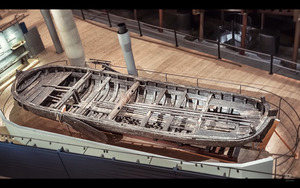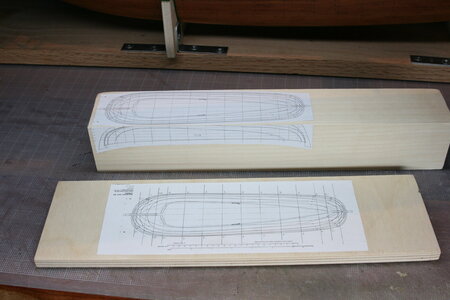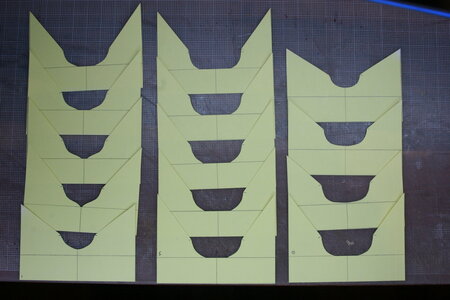The Swedish warship Vasa was built between 1626 and 1628 and promptly sank after sailing roughly 1300 m into her maiden voyage on 10 August 1628. She slipped into the obscurity of history only to be relocated in the late 1950's. Beginning in 1961 she was raised largely intact and now has the place of honor at the VasaMuseet in Stockholm.
The last find recovered from the Vasa wreck site was a longboat. During the excavation of the lower gun deck of the mother ship two leeboards and a windlass were found and they fit the recovered longboat perfectly. Experts have concluded, therefore, that the longboat belonged to the Vasa.
An esping is a Swedish support boat that was either rowed or sailed. They were typically as long as the width of the ship they supported. The esping located with the Vasa is 11.7 meters long and the beam of the Vasa is 11.3 m. The esping is 3.2 m at her extreme beam. She does not have a keel, only two partial false keels at both ends to protect against abrasion. The flat bottom is made of four broad straight boards. The hull is built of oak (including trenails) and other parts of the boat are made from pine. There are also nails and bolts from wrought iron.
I am attempting this scratch build with the goal of displaying it alongside my 1:64 Vasa.

The last find recovered from the Vasa wreck site was a longboat. During the excavation of the lower gun deck of the mother ship two leeboards and a windlass were found and they fit the recovered longboat perfectly. Experts have concluded, therefore, that the longboat belonged to the Vasa.
An esping is a Swedish support boat that was either rowed or sailed. They were typically as long as the width of the ship they supported. The esping located with the Vasa is 11.7 meters long and the beam of the Vasa is 11.3 m. The esping is 3.2 m at her extreme beam. She does not have a keel, only two partial false keels at both ends to protect against abrasion. The flat bottom is made of four broad straight boards. The hull is built of oak (including trenails) and other parts of the boat are made from pine. There are also nails and bolts from wrought iron.
I am attempting this scratch build with the goal of displaying it alongside my 1:64 Vasa.
Vasa - 1:65 DeAgostini [COMPLETED BUILD]
Editorial note added following the completion of this build: This build report is crazy long - unhelpfully so. If you're not interested in all the details and just want to see how it all turned out use this link to see the final result: Final Images. If that sparks your interest and you want to...
shipsofscale.com











